To answer the question what is re-export’s definition, we have to say that in the United States Bureau of Industry and Security (BIS), re-exporting is defined as the exportation of an item that complies with the Export Administration Regulations (EAR) to another country. When an export of technology or software to another country happens due to an EAR, it’s called re-export.
This is a matter of importance because you will need a license for your item, technology, or software to re-export from its current country to the same country (let’s call it Country C) if it needs a license for exporting.
Simply put, re-export is the act of exporting goods imported from foreign countries and used in the country already. Analytically, they need to be recorded separately. To analyze whether re-exports are indeed re-exports, i.e., not export of goods with a domestic origin through processing, additional information may be required.
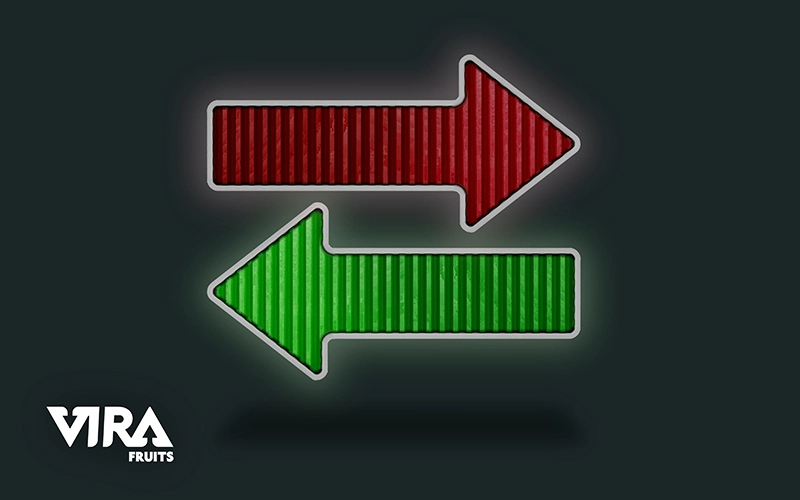
What is the difference between re-export and re-import?
You need to understand what is re-export and re-import clearly because re-importing and re-exporting are common expressions in international trade. Exports of foreign goods are called re-exports if we categorize them as foreign goods and domestic goods.
Re-exporting goods means importing them (they become foreign goods) then exporting them back. For instance, machines may be imported into a country for testing, and they may be returned once they have gone through necessary testing. Sending back machinery, in this case, is known as re-exporting.
Imports can be divided into foreign goods and domestic goods. Re-importing domestic goods is defined as the importation of domestic goods. Whenever a country exports goods to another country and then imports back those same goods, this is considered re-importing.
For instance, a piece of machinery has been sent for testing to a country and then delivered back to the country once tested. Re-import is the process of bringing back machines.
Re-importing and re-exporting occur frequently due to non-satisfaction with quality measures by the exporters, non-conformance to buyer’s requirements, or exports for a particular purpose like an exhibition or project.
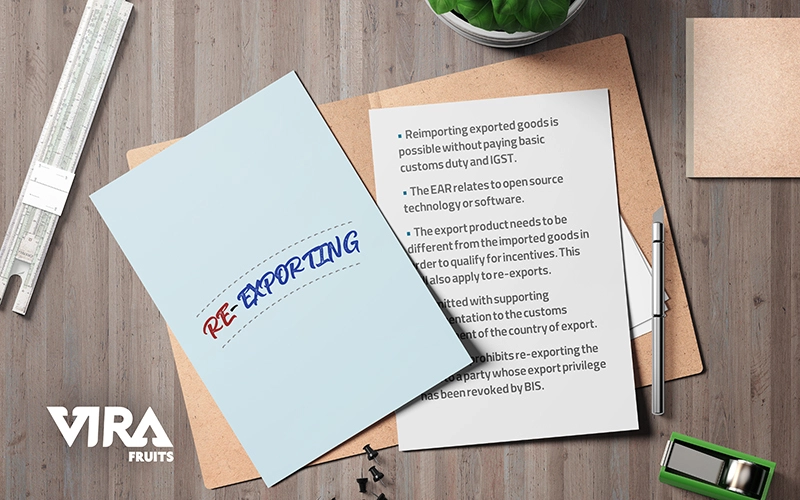
Notice these notes when realizing what re-export is!
- Re-importing exported goods is possible without paying basic customs duty and IGST.
- The EAR relates to open source technology or software.
- The export product needs to be different from the imported goods in order to qualify for incentives. This will also apply to re-exports.
- Documents for re-exporting can be submitted with supporting documentation to the customs department of the country of export.
- The EAR prohibits re-exporting the item to a party whose export privilege has been revoked by BIS.
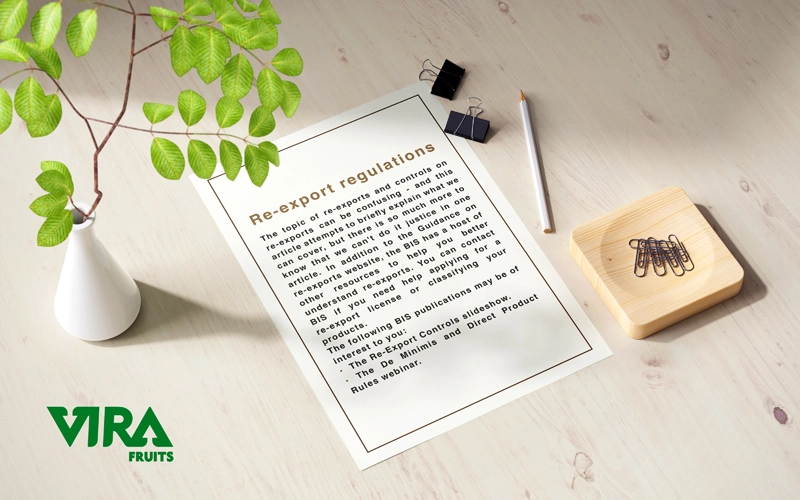
Re-export regulations
The topic of re-exports and controls on re-exports can be confusing – and this article attempts to explain what we can cover briefly, but there is so much more to know that we can’t do it justice in one article. In addition to the Guidance on the re-exports website, the BIS has a host of other resources to help you better understand re-exports. You can contact BIS if you need help applying for a re-export license or classifying your products.
The following BIS publications may be of interest to you:
• The Re-Export Controls slideshow.
• The De Minimis and Direct Product Rules webinar.
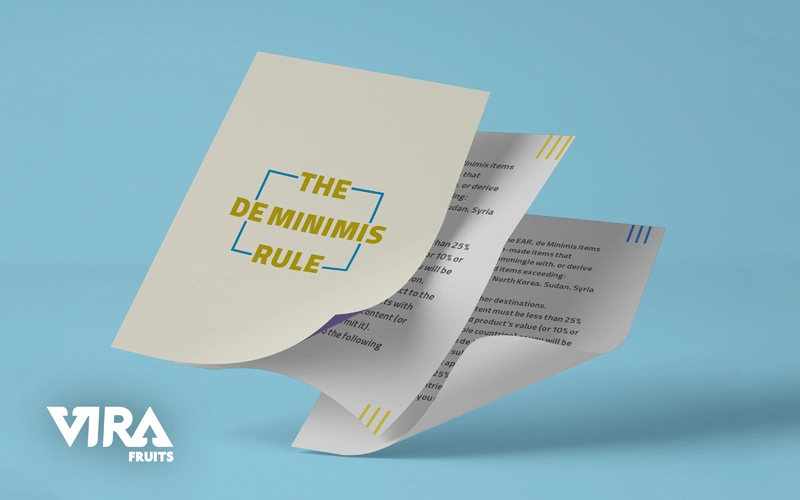
The De Minimis Rule
According to the EAR, de Minimis items are any foreign-made items that incorporate, commingle with, or derive from controlled items exceeding:
• 10% for Cuba, North Korea, Sudan, Syria, and Iran.
• 25% for all other destinations.
Controlled content must be less than 25% of your finished product’s value (or 10% or less inapplicable countries), or you will be eligible for the De Minimis Exception, which will not subject your product to the EAR. The EAR applies to products with more than 25% controlled content (or 10% for countries that permit it). Therefore, you must do the following:
- Classify the product
- Identify the company’s ECCN and licensing requirements. Enter the first part of the ECCN number or a short description of your product to use Shipping Solutions’ Product Classification Wizard to find the right ECCN classification for your product.
- Find out if there is a license exception available (if there is).
- Obtain permission if needed.
We hope this article was useful for you and now that you know what is re-export you can have a more successful business.
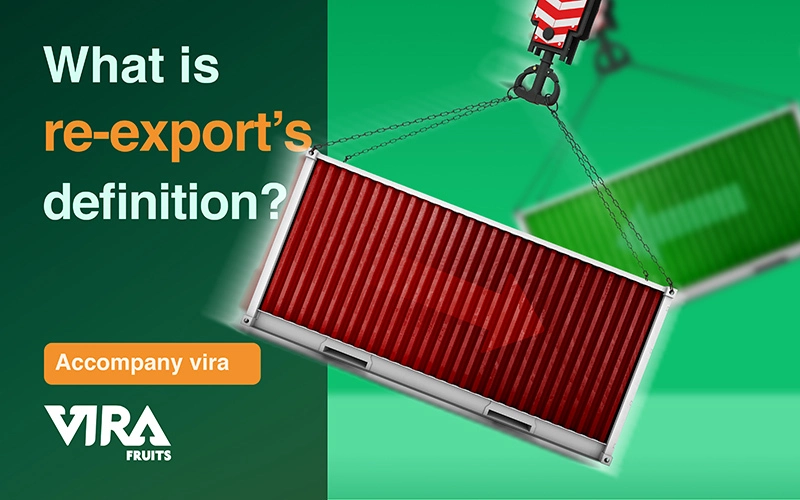
RobertDer
Ciao, volevo sapere il tuo prezzo.
RobertDer
Hai, saya ingin tahu harga Anda.
MatthewDer
Dia duit, theastaigh uaim do phraghas a fháil.
WalterDer
Hi, kam dashur të di çmimin tuaj
DanielDer
Γεια σου, ήθελα να μάθω την τιμή σας.
BrianDer
Hi, მინდოდა ვიცოდე თქვენი ფასი.
tryptomer238
No matter if some one searches for his essential thing, so he/she wishes to be available that in detail, so that thing is maintained over here.
GeorgeDer
Xin chào, tôi muốn biết giá của bạn.
Matin Rostami
Xin chào, bạn cần giá của loại trái cây nào?
ChristianDer
Hallo, ek wou jou prys ken.
Matin Rostami
Watter vrugteprys wou jy hê?
MichaelDer
Hola, quería saber tu precio..
ThomasDer
Hi, მინდოდა ვიცოდე თქვენი ფასი.
zoritoler imol
Pretty! This was a really wonderful post. Thank you for your provided information.
Matin Rostami
thanks so much.